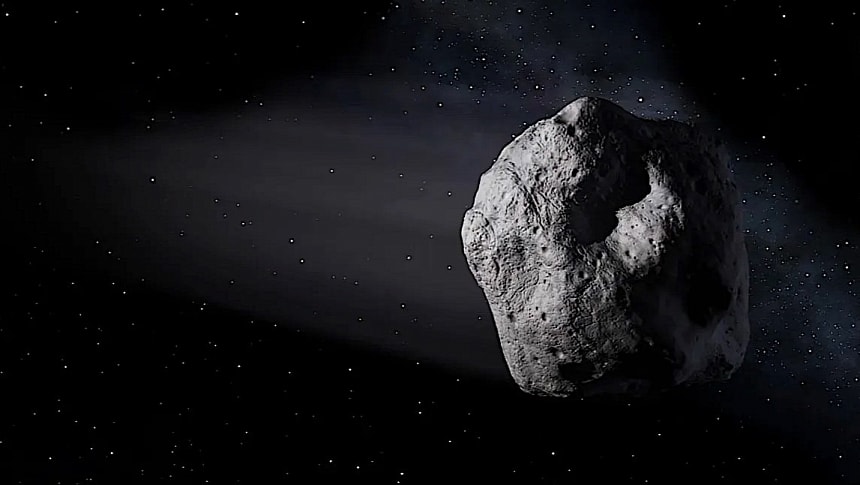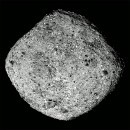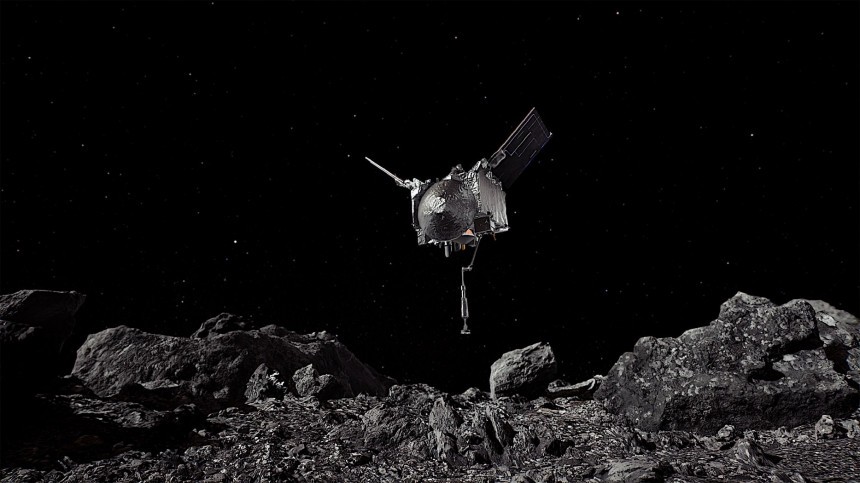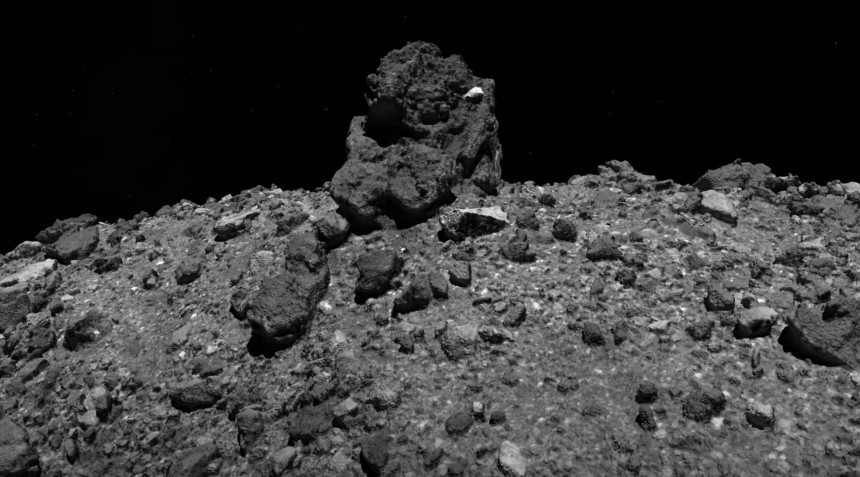There are many ways our civilization could come to an abrupt end, but only a handful of them have to do with forces so powerful and out of our control that they'd be impossible to stop. An asteroid strike is one of those world-ending events we would be completely defenseless against, and the more we try to find ways around them, the more we realize that's almost impossible.
As per the most recent count, the number of near-Earth objects (that is asteroids and comets), meaning the ones close enough to our planet to pose a potential danger to it, is of over 20,000. We know the orbits and behavior of many of them, but not all, and that has a lot of people in powerful places quite worried. So much so, in fact, that some are actively trying to do something.
Back in 2013, for instance, the American space agency kicked off a series of meetings called the Planetary Defense Interagency Tabletop Exercise. Dedicated to all those with something to say in planetary defense, the exercise takes place every two years, and each time it is centered on a new impact scenario to which solutions must be found.
We know of such things for a while now. Back in 2021, for instance, during the 7th IAA Planetary Defense Conference, the name of the game was responding to an asteroid strike taking place somewhere in Europe.
That scenario from three years ago called for Earthers to know about the asteroid six months ahead of the impact time, and to try to find ways to stop the rock. When it was all done, it turned out six months is not nearly enough time for us to do anything about an incoming asteroid. So the exercise eventually turned from an active operation into an evacuation game for the population of Germany, the Czech Republic, and Austria, where the scenario said the asteroid will hit.
But how about 14 years? Would that be enough time for us to find a more proactive solution?
14 years is the timeframe from the discovery of an asteroid to it striking our planet in the most recent tabletop exercise conducted as part of the fifth Planetary Defense Interagency meeting, which took place back in April at the Johns Hopkins Applied Physics Laboratory in Laurel, Maryland.
We're talking about this exercise now because a preliminary report on it was recently published, and even if it paints a pretty incomplete picture of what we could do about such a threat, it kind of once again makes me feel that if an asteroid is coming, were pretty much screwed.
The exercise scenario, devised by the NASA Center for Near Earth Object Studies, the group that calculates the orbit of every known near-Earth object, revolved around an asteroid "possibly several hundred yards across" having been spotted coming our way.
The simulated math performed as part of the scenario said it had a 72 percent chance of hitting our world 14 years after the moment of discovery, with the impact zones estimated to be non-descript, heavily populated areas in North America, Southern Europe, and North Africa.
As per the rules of the tabletop game, the asteroid would play a sort of hide and seek game. It would be visible to our tracking methods for several months at a time, but then would move too close to the Sun, making it impossible for humans to keep tracking it for months still.
The idea behind this scenario was to see what could be done to either stop the asteroid or mitigate the effects of its strike.
About 100 scientists from U.S. and international organizations scratched their heads trying to figure out the best course of action. They considered pretty much everything, from sending a reconnaissance spacecraft to learn more about the asteroid's size, composition, and orbit, to trying to change its trajectory just like the Double Asteroid Redirection Test (DART) spacecraft showed we could easily do.
We're not told exactly what solution for this scenario turned out to be the best, if any. What NASA says is that "any deflection or reconnaissance mission would need many years of preparation," and in my book, that kind of means that no, not even 14 years of advanced warning wouldn't be enough to shield us from space harm.
The upside is that, according to NASA, "large asteroid impacting Earth is highly unlikely for the foreseeable future." At least that's what we know at the moment because come the end of this month, the world's single space telescope dedicated to finding these things, the Near-Earth Object Wide-field Infrared Survey Explorer (NEOWISE), will die on the job.
A new telescope, the "first purpose-built infrared space telescope dedicated to hunting hazardous near-Earth objects," will be launched in 2027. NASA hopes that by using it, we will learn about more than 90 percent of the dangerous bits of rock orbiting our planet within a 30 million miles (48 million km) radius.
We are told to expect "a complete after-action report for the tabletop exercise," including strength, gaps and recommendations, so we'll update this story as soon as we know more.
Back in 2013, for instance, the American space agency kicked off a series of meetings called the Planetary Defense Interagency Tabletop Exercise. Dedicated to all those with something to say in planetary defense, the exercise takes place every two years, and each time it is centered on a new impact scenario to which solutions must be found.
We know of such things for a while now. Back in 2021, for instance, during the 7th IAA Planetary Defense Conference, the name of the game was responding to an asteroid strike taking place somewhere in Europe.
That scenario from three years ago called for Earthers to know about the asteroid six months ahead of the impact time, and to try to find ways to stop the rock. When it was all done, it turned out six months is not nearly enough time for us to do anything about an incoming asteroid. So the exercise eventually turned from an active operation into an evacuation game for the population of Germany, the Czech Republic, and Austria, where the scenario said the asteroid will hit.
But how about 14 years? Would that be enough time for us to find a more proactive solution?
We're talking about this exercise now because a preliminary report on it was recently published, and even if it paints a pretty incomplete picture of what we could do about such a threat, it kind of once again makes me feel that if an asteroid is coming, were pretty much screwed.
The exercise scenario, devised by the NASA Center for Near Earth Object Studies, the group that calculates the orbit of every known near-Earth object, revolved around an asteroid "possibly several hundred yards across" having been spotted coming our way.
The simulated math performed as part of the scenario said it had a 72 percent chance of hitting our world 14 years after the moment of discovery, with the impact zones estimated to be non-descript, heavily populated areas in North America, Southern Europe, and North Africa.
As per the rules of the tabletop game, the asteroid would play a sort of hide and seek game. It would be visible to our tracking methods for several months at a time, but then would move too close to the Sun, making it impossible for humans to keep tracking it for months still.
The idea behind this scenario was to see what could be done to either stop the asteroid or mitigate the effects of its strike.
We're not told exactly what solution for this scenario turned out to be the best, if any. What NASA says is that "any deflection or reconnaissance mission would need many years of preparation," and in my book, that kind of means that no, not even 14 years of advanced warning wouldn't be enough to shield us from space harm.
The upside is that, according to NASA, "large asteroid impacting Earth is highly unlikely for the foreseeable future." At least that's what we know at the moment because come the end of this month, the world's single space telescope dedicated to finding these things, the Near-Earth Object Wide-field Infrared Survey Explorer (NEOWISE), will die on the job.
A new telescope, the "first purpose-built infrared space telescope dedicated to hunting hazardous near-Earth objects," will be launched in 2027. NASA hopes that by using it, we will learn about more than 90 percent of the dangerous bits of rock orbiting our planet within a 30 million miles (48 million km) radius.
We are told to expect "a complete after-action report for the tabletop exercise," including strength, gaps and recommendations, so we'll update this story as soon as we know more.











